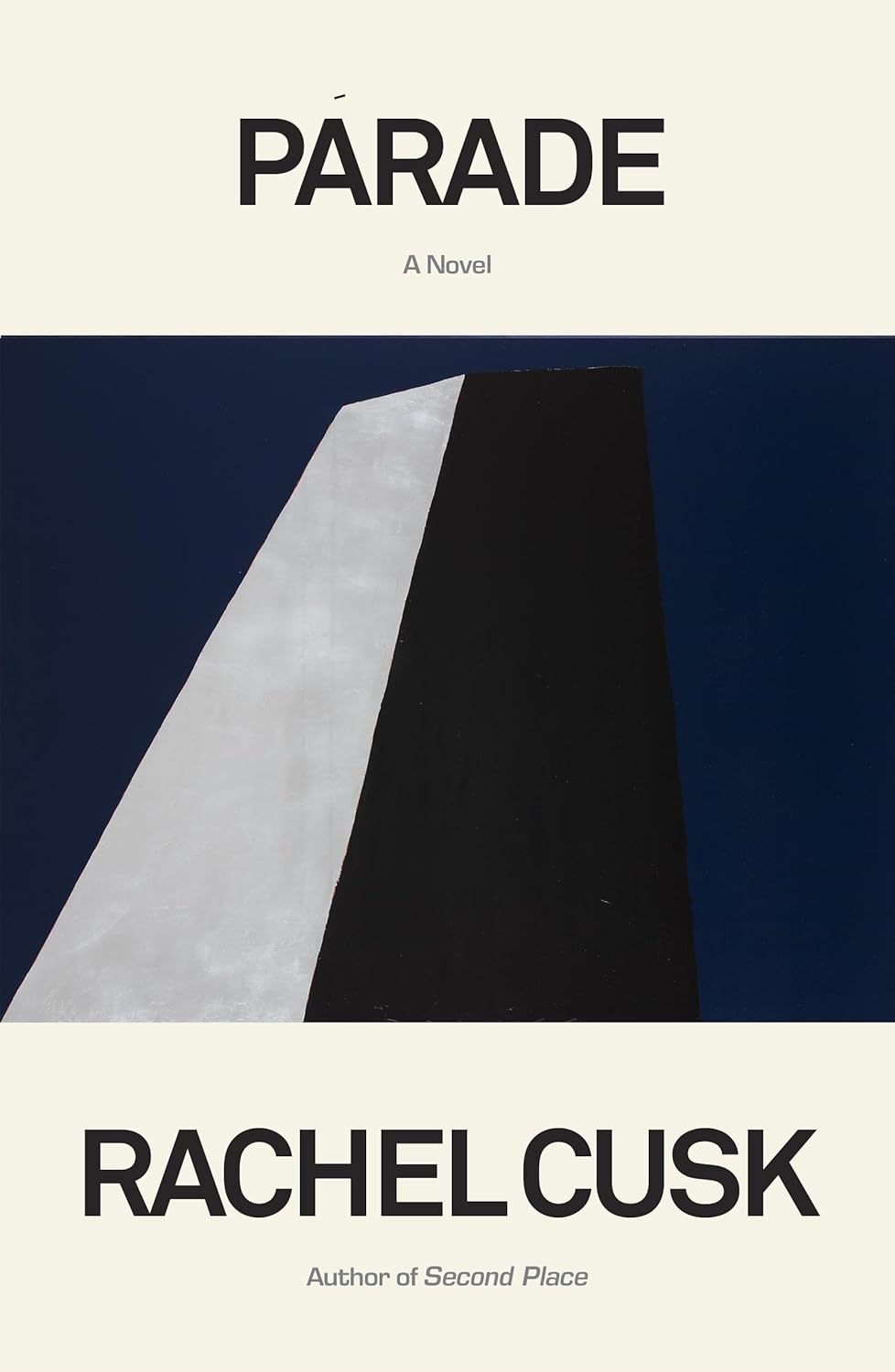
Parade
The Stuntman
by Rachel CuskThe chapter opens with the artist G, who begins painting upside down as a radical response to his artistic and existential crisis. Initially, his inverted paintings appear accidental, but their deliberate nature is confirmed by his signature. This innovation earns critical acclaim, reinforcing G’s reputation despite his lingering resentment toward the art world, which had harshly criticized his early work. G’s wife observes that his inversion technique inadvertently mirrors the “female condition”—a sense of fundamental wrongness beneath a surface of correctness. His paintings, particularly one of birch trees, evoke a paradoxical calmness and madness, suggesting a shelter in disorientation. G’s wife wonders if his marginal perspective stems from his own vulnerability, as he once confessed to relying on masturbation before their marriage, implying a relinquishment of traditional masculinity.
G’s early portraits and landscapes explore themes of violence and wholeness, with inverted imagery resolving the brutality of felling trees (and, metaphorically, people). His wife recognizes in his work a reflection of her own suppressed unhappiness, a “nameless female” anguish. The public avoids questioning whether G paints inverted scenes or merely flips finished works, a silence that underscores art’s complicity in obscuring truth. G’s wife becomes a reluctant confidante for others’ insecurities, reflecting on how nobility is eroded by unspoken confusion. Meanwhile, G openly discusses his technical challenges, abandoning photographs for larger, dreamlike abstractions. His belief that “women cannot be artists” reveals a gendered hierarchy: his wife muses that women’s artistic potential is stifled to preserve men’s creative oblivion, a privilege dependent on domestic labor. A female novelist’s awe at G’s work—exclaiming, “I want to write upside down”—hints at the appropriation of female experience by male artists.
The narrative shifts to an unnamed couple abruptly evicted from a borrowed apartment, a loss that destabilizes their sense of belonging. The apartment’s ornate mirror, which once framed the narrator proportionally within a larger world, becomes a symbol of lost orientation. Their subsequent homelessness—staying in transient, unsettling spaces—mirrors their psychological limbo. A pivotal moment occurs when the narrator is violently attacked by a deranged woman in broad daylight. The assault, both physically and existentially jarring, forces her to confront a “death-in-life” sensation tied to her femininity. She conceptualizes a “stuntman” self—a silent, sacrificial double who absorbs violence so her primary self can maintain coherence. The attack fractures this duality, exposing the stuntman’s role in sustaining the illusion of invulnerability.
The chapter closes with G’s failed attempt to paint his wife classically, as his inverted technique now reveals his latent hatred and objectification. Their visit to G’s tyrannical father in a retirement home underscores generational cycles of violence and forgiveness. G’s wife, moving through the room like a “striped wild beast” in slatted light, embodies his crippling awareness of her partial freedom and his own compromised masculinity. Meanwhile, the narrator, still reeling from her attack, visits an exhibition by the sculptor G, whose genderless fabric forms suggest an escape from gendered violence. The narrator’s desire to retaliate—to “pass on” the violence she endured—highlights art’s dual role as both sanctuary and confrontation. The stuntman, now externalized, walks in her place, embodying the insanity of matter itself. The chapter weaves together themes of artistic inversion, gendered violence, and the unstable boundaries between self and other, reality and representation.
FAQs
- What is the narrative style of Parade Chapter 1?
- Likely fragmented, blending dialogue, observation, and introspection. Cusk often avoids traditional plot, favoring philosophical musings and indirect storytelling.
- Who are the main characters introduced in this chapter?
- Possibly unnamed or loosely defined figures (common in Cusk’s work), with fleeting interactions that reveal deeper tensions about identity, art, and perception.
- What themes are introduced in Chapter 1?
- Themes may include:
- Performance vs. reality (e.g., how people present themselves vs. their inner lives).
- The burden of identity (e.g., aliases, artistic anonymity).
- The instability of truth (e.g., unreliable narration, shifting perspectives).
- How does Cusk use setting in this chapter?
- Settings (e.g., a restaurant, a courtyard, a cityscape) likely serve as metaphors for transience or isolation, mirroring characters’ emotional states.
- Is there a central conflict in Chapter 1?
- Conflict may be existential rather than plot-driven—e.g., characters grappling with self-definition or the tension between observation and participation.
Quotes
- On Identity & Anonymity
- “To conceal identity is to take from the world, without paying the costs of self-declaration.”
- (Reflects Cusk’s recurring focus on the ethics of invisibility, as seen in later chapters.)
- On Perception
- “Being seen while seeing, they are doubly illuminated by the light of perception.”
- (Highlights Cusk’s interest in voyeurism and the power dynamics of observation.)
- On Time & Memory
- “If it only happened once, it didn’t happen at all.”
- (A likely refrain, emphasizing the unreliability of singular experiences.)
- On Art & Reality
- “The writer writes about what he already knows and has decided is there. He pretends he doesn’t.”
- (Critiques the artifice of storytelling, a meta-commentary on Cusk’s own method.)
- On Death & Legacy
- “The violence of death had the appearance of a strange generosity.”
- (Characteristic of Cusk’s stark, philosophical prose on mortality.)
